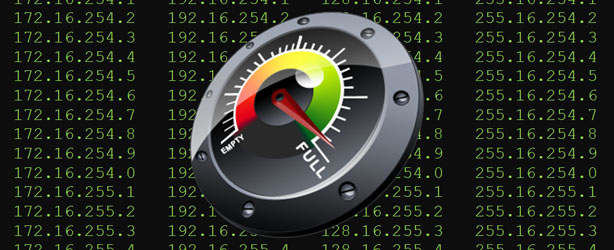
Help - We've Run out of IP Addresses!
In much the same way that the jumper-wearing godfathers of computing found it hard to envisage a time when we could possibly use more than 2TB of storage space, and laid down the primordial foundations for the BIOS accordingly, the same also goes for the crusty IPv4 standard that currently governs IP addresses. In theory, we can have over 4 billion of them, but with the explosion of net-connected gizmos that's seemingly no longer enough. In fact, the Regional Internet Registry (RIR) for Asia Pacific, APNIC, is now down to its final batch of IPv4 addresses, and it's due to run out later this year.Unfortunately, getting around this problem isn't going to be easy. The proposed solution is IPv6, which features 128-bit addresses written in hexadecimal (for example, 2001:DB8:8::260:97ff:fe40:efab). Not only are these not as comfortable to look at and remember as the classic 32-bit strings of numbers that we know as IPv4 IP addresses, but they're not backward compatible with them either.

Even so, IPv6 appears to be our only choice when it comes to getting out of this mess, and the RIRs are urgently trying to make it happen. 'IPv6 is the future,' says Axel Pawlik, managing director of Europe's RIR, RIPE NCC. 'It's unavoidable, and it will happen. Anyone who doesn't believe that is a fool. If you haven't made plans to implement IPv6, you'll be fine for a few months and for now, but you'll have a problem soon. Now's your last chance – get it done.'
Along with the five other RIRs around the world, it's RIPE NCC's job to allocate batches of IP addresses. This is done on a basis of need, as IP addresses can't be bought. You can think of a current IPv4 address in the same way that you think of a 32-bit word, or the maximum amount of memory that can be addressed by a 32-bit operating system. Basically, we can have over 4 billion of them and, believe it or not, that's no longer enough.
'It started in the 1970s,' says Pawlik, 'when some geeks in America started to network their computers. They developed this protocol – this Internet thing – and they asked how many computers there will ever be in the world.' He chuckles as he says 'they probably thought there would only ever be five, or something.'
Pawlik has been involved with the development of widespread Internet access since the mid-1980s, and he's watched the demand for IP addresses explode in a short space of time. 'We were giving out classes of addresses in the mid-1980s,' he recalls, 'which meant there were three different sizes of chunks – A, B and C class networks, with the small one being the 256 addresses for small networks and so on.
'But in the early 1990s it became clear that this Internet thing was soon going to involve millions of computers, and that it would expand further and become successful in terms of taking on all sorts of data tasks – email is the obvious one, and then the worldwide web.
'So we said: "Oh god, we're going to run out of those addresses," and there was a little discussion about how we could stem the immediate problem. We threw away this class-based networking scheme with the A, B and C class-based networks, which made it all very flexible – we call that CIDR (Classless Inter-Domain Routing) - but that was only a measure to postpone the problem – we would still run out of IP addresses one day.'

MSI MPG Velox 100R Chassis Review
October 14 2021 | 15:04









Want to comment? Please log in.